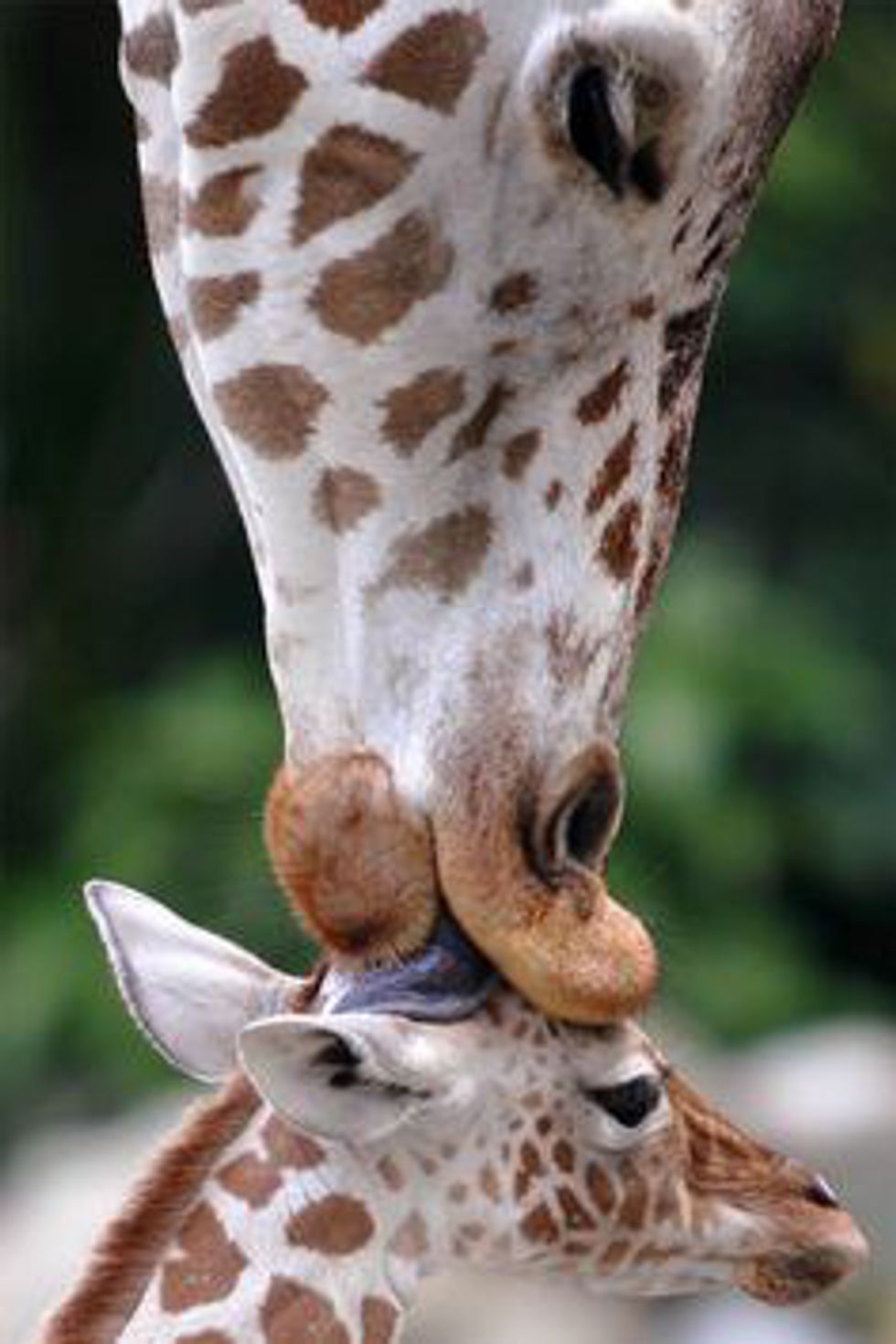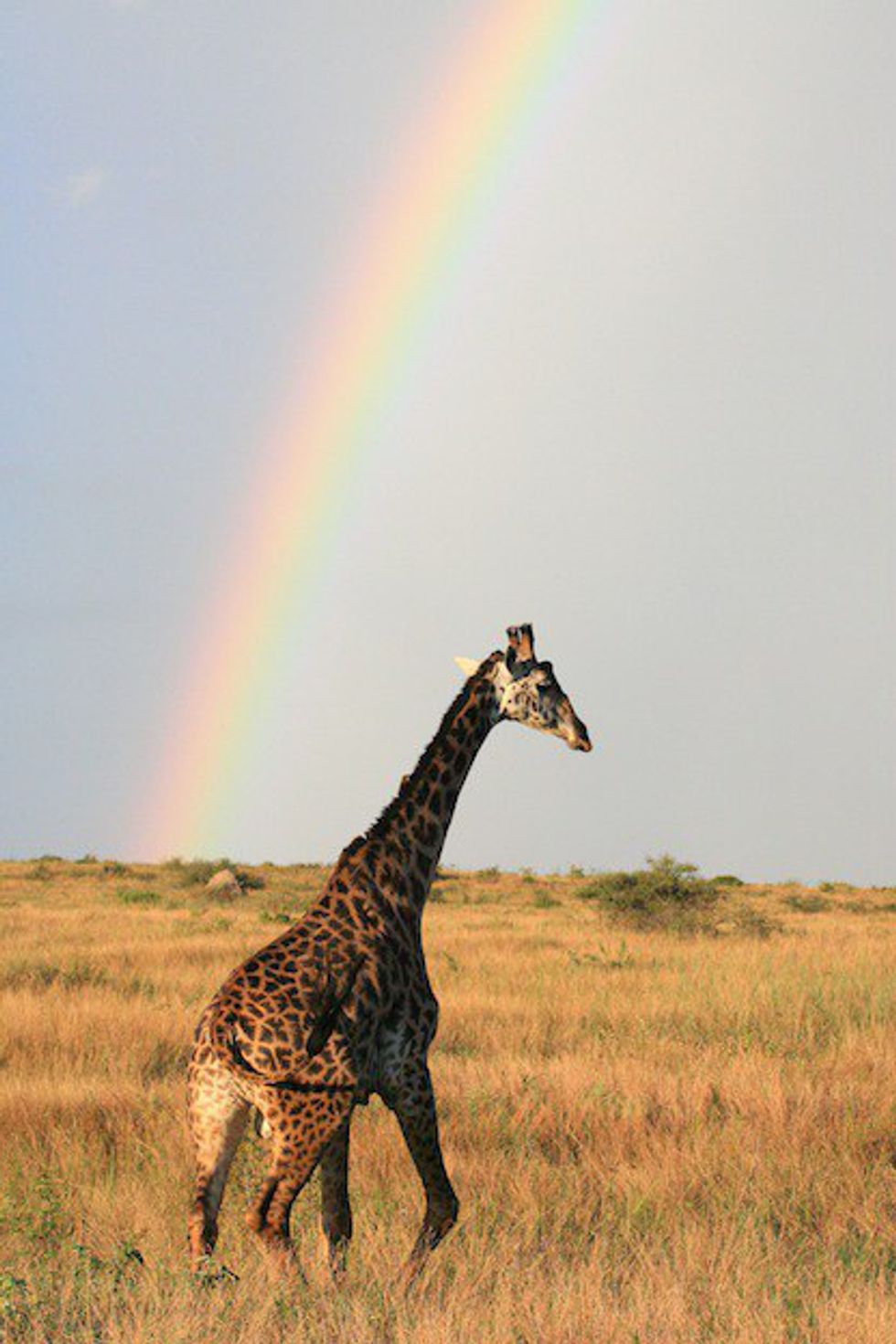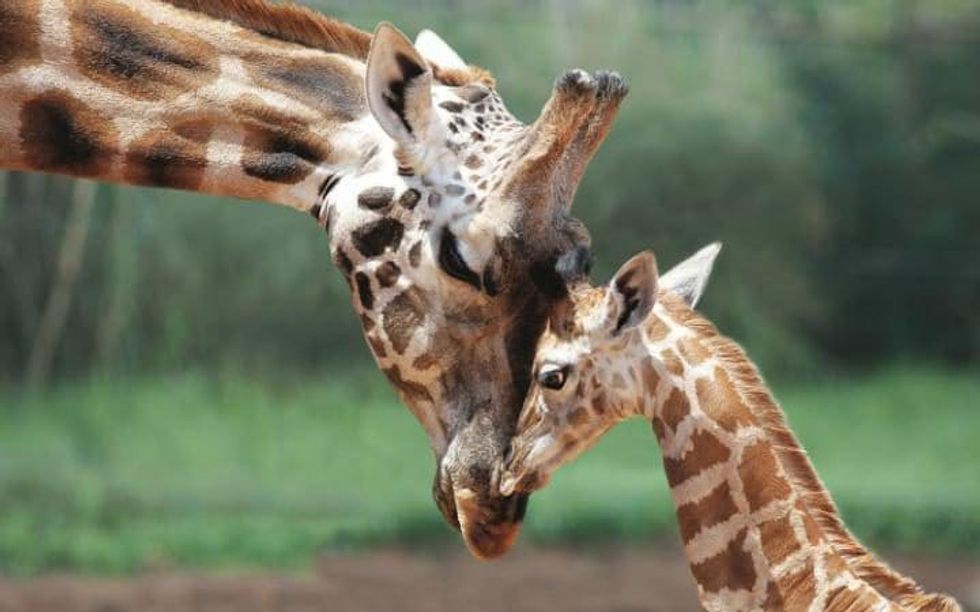This past week it had been announced by the International Union for the Conservation of Nature (IUCN) that the tallest land animal on earth had been officially added to the threatened and endangered animals list. Yes folks, I'm talking about the spotty, long-necked Africa-dwelling beasts we know as giraffes or scientifically as Giraffa camelopardalis. They were put upon the 'red list' meaning that the species is spiraling to eventual global extinction if the total species population percentage continues to decline at the rate it has been. In 1985 there were approximately 163,000 giraffes globally but, in the span of 30 years, in 2015 there were only 97,000 total giraffes recorded. This is an approximate 40% species population declination. As my all-time favourite zoo animal, it really hurts my heart to hear that this majestic creature's population is in vile danger.
IUCN co-chairman Julian Fennessy stated that this species is undergoing what is classified as a "silent extinction," which simply means that it is a rapid declination of a species that was occurring without any recognition. Yes, there are still giraffes at zoos, safari sites, and in the media, which is why it is just now coming out of this dwindling and why it wasn't recognized in the first place. "As one of the world's most iconic animals, it is timely that we stick our neck out for the giraffe before it is too late," Fennessy stated.
But how could this be? How could this adorable, gentle giant be nearing extinction? "Giraffes face the same problems that other wildlife species do. It's just that they've been overlooked," Fennessy stated.
Unfortunately, it is the same thing that causes many other species to become threatened, endangered, and/or extinct: habitat loss or destruction. To thrive, as most know, giraffes feed by eating leaves off of trees therefore without a food source, they face starvation. Also, with deforestation leads to industrialization and building roads, homes, and other structures made for human civilization. What isn't realized is just what this does to the animals who thrive in that particular environment. Giraffes are massive and need space and with this industrialization, that takes away their space and thus leaving them to find elsewhere, if possible, or to simply become lost in a sense.
In certain parts of Africa, poaching is still very prevalent, some purposefully for the giraffes and some for other animals which the giraffe is simply at the wrong place at the wrong time. In Tanzania, it's common for people to hang neck snares in trees in order to suffocate giraffes to gain meat. In other parts of Africa, it is also fairly common for giraffes to accidentally step into snare traps that have been set for other animals and, therefore, dying from an untreated infection.
This year has certainly been a downward spiral with minimal triumphs, not just for our own species, but also for animals globally. The plus side was that manatees were deemed as no longer being endangered, but sadly more disaster happened than good: African elephants and the African grey parrot are also nearing extinction, an endangered gorilla was shot and killed, and now the friendly, globally iconic giraffe is facing endangerment.
Ed“I think we are going to see this trend continue unless we take steps to secure the habitat for wildlife such as lions, pangolins ... giraffes," Colby Loucks, World Wildlife Fund’s senior director for wildlife conservationstated. In certain parts of Africa, steps have already taken to tag giraffes in order to get a more accurate population count. One thing is certain, in order for a difference to be made in these creatures' lives, it is important to remain informed and educated about these creatures and their current population state and what can be done in order to aid with the conservationists' hope to regrow the giraffe population. It must be remembered that animals can't communicate with us and tell us what's wrong, that's why it's important to pay attention, otherwise, had it not been caught, it could have been the end for the giraffe species as a whole.
For more information about what you can do to help these gentle giants, visit the Giraffe Conservation Foundation. There you can make a difference by adopting a giraffe, donating to the cause, as well as becoming more informed about the current state of giraffes.









 Energetic dance performance under the spotlight.
Energetic dance performance under the spotlight. Taylor Swift in a purple coat, captivating the crowd on stage.
Taylor Swift in a purple coat, captivating the crowd on stage. Taylor Swift shines on stage in a sparkling outfit and boots.
Taylor Swift shines on stage in a sparkling outfit and boots. Taylor Swift and Phoebe Bridgers sharing a joyful duet on stage.
Taylor Swift and Phoebe Bridgers sharing a joyful duet on stage.













